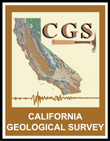
|
California Division of Mines
Special Report 68 Igneous and Metamorphic Rocks of the Western Portion of Joshua Tree National Monument, Riverside and San Bernardino Counties, California |
GEOLOGIC HISTORY
The geologic history of Joshua Tree National Monument spans an undetermined length of time and involves a long sequence of intrusions and periods of metamorphism.
Probably the first event which can now be deciphered was the sedimentary and possible volcanic accumulation of material which has since been metamorphosed to form the Pinto gneiss. This gneiss, a formation of great areal extent, forms the terrain into which all of the intrusive rocks in the area have been injected. Following, or as a late stage of, the metamorphism which formed the typical gneissic rock, was the development of the non-foliated, granitoid, parts of the rock mapped as Pinto gneiss. The granitoid rock does not appear to be related to any of the intrusions in the area.
Age relations of the Gold Park gabbro-diorite are uncertain. The rock appears to intrude the Pinto gneiss, but it may have injected the sediments before their metamorphism to form the gneiss. Relations between the gabbro-diorite and the Palms quartz monzonite are equally uncertain, although in some places the quartz monzonite appears to be the younger rock.
The Palms quartz monzonite is definitely younger than at least most of the rock mapped as gneiss and probably was formed by crystallization of a magmatic intrusion into the gneiss. Along some of the borders between gneiss and quartz monzonite is a small amount of migmatization and injection, and some of the Pinto gneiss may have been derived from igneous material. The major product of the reaction between gneiss and quartz monzonite, however, is the monzonitic porphyry. The porphyry has formed around the northern periphery of Units A and B of the Palms quartz monzonite apparently by reaction between the intrusion and the wall rock.
Following the formation of the porphyry and Palms quartz monzonite was the intrusion and crystallization of the White Tank quartz monzonite, the youngest major plutonic rock in the area. A small mass of granodiorite is probably related to the quartz monzonite but is apparently a somewhat later injection. Joints in the quartz monzonite and some of its wall rocks are evidently later than the crystallization of the quartz monzonite but may be related to late stage cooling stresses in the intrusion.
Numerous small silicic and basic dikes cut the Palms quartz monzonite and monzonitic porphyry and have probably been injected after all of the plutonic activity in the area. Their age relations to the White Tank quartz monzonite and the granodiorite, however, are not certain.
The youngest igneous rock in the area is the olivine basalt which forms Malapai Hill. Apparently it represents a shallow injection for which there may or may not have been extrusive equivalents. The age of the basalt is unknown, but it may be very recent.
The only discernible faulting is younger than all of the igneous rocks in the area with the possible exception of the basalt. Associated and probably synchronous with the faulting are the fans and pediments which have been developed next to the fault scarps.
| <<< Previous | <<< Contents >>> | Next >>> |
ca/cdm-sr-68/sec4.htm
Last Updated: 18-Jan-2007